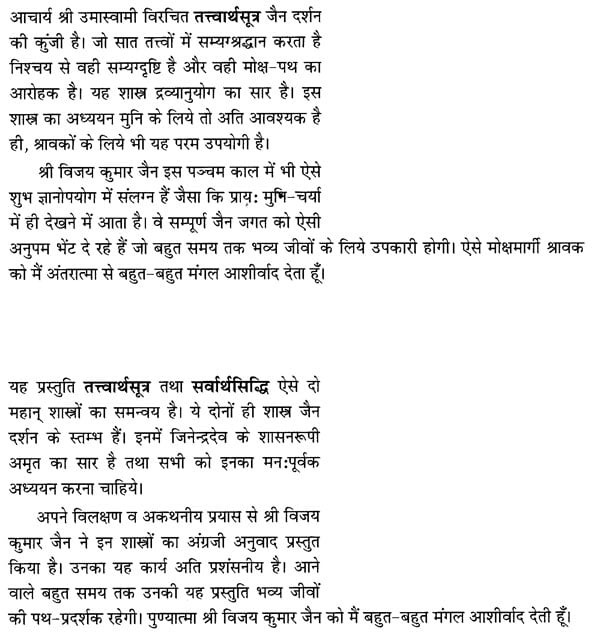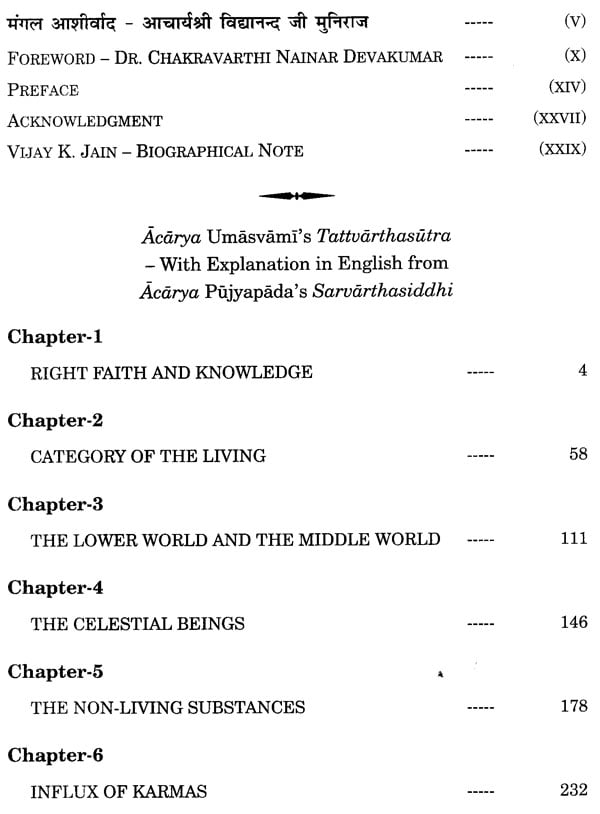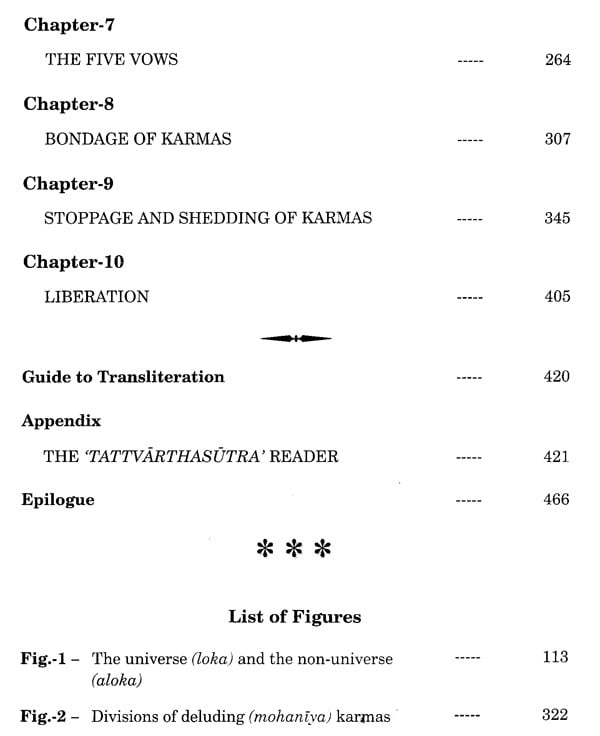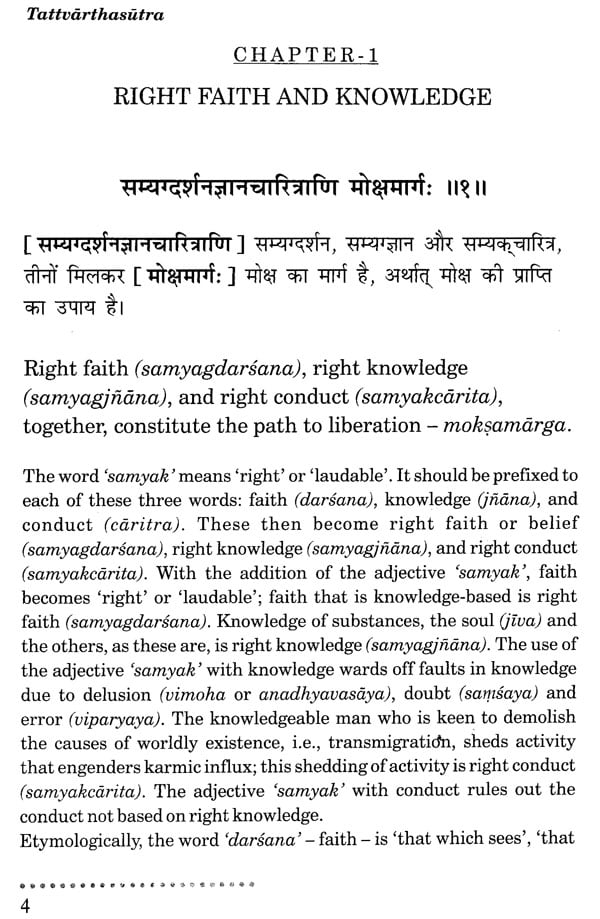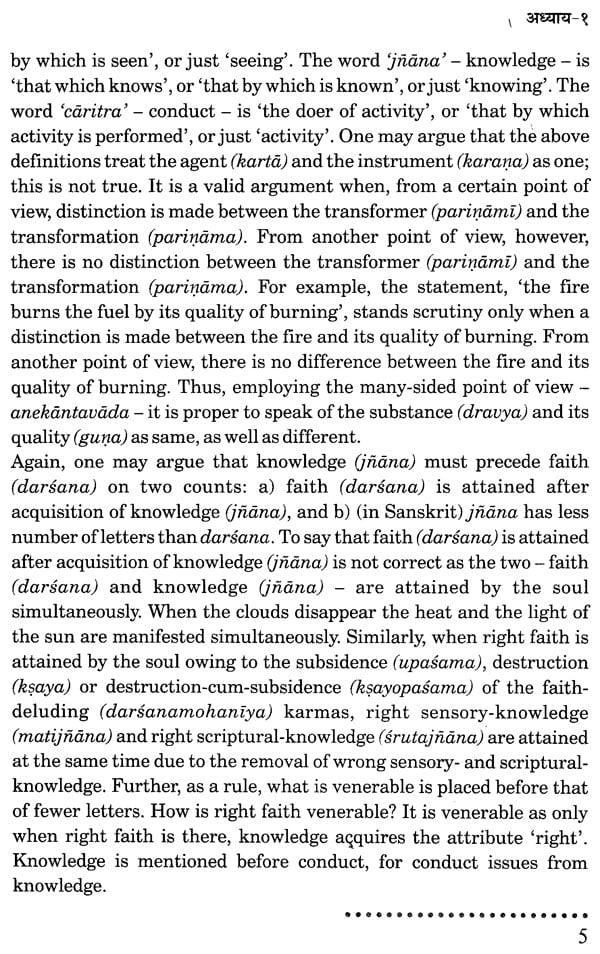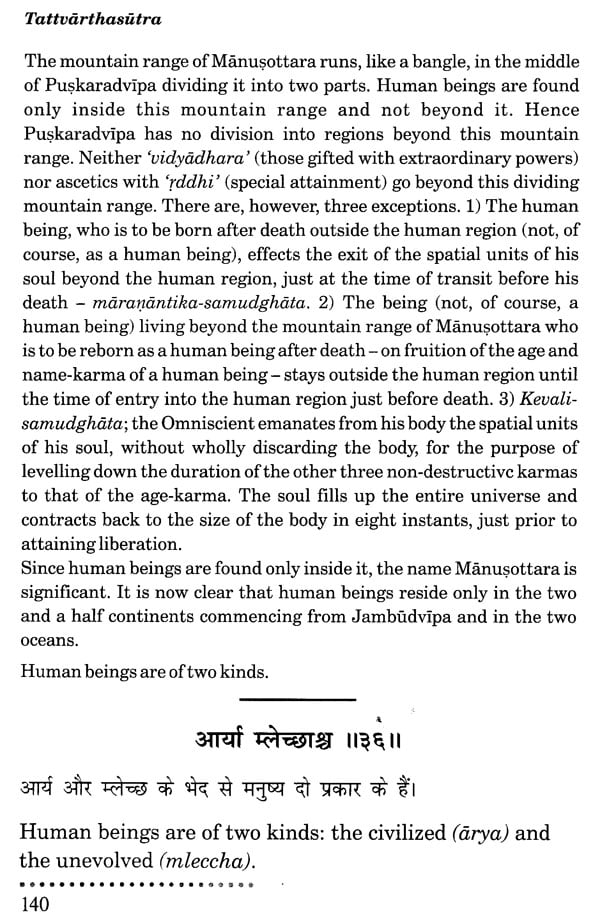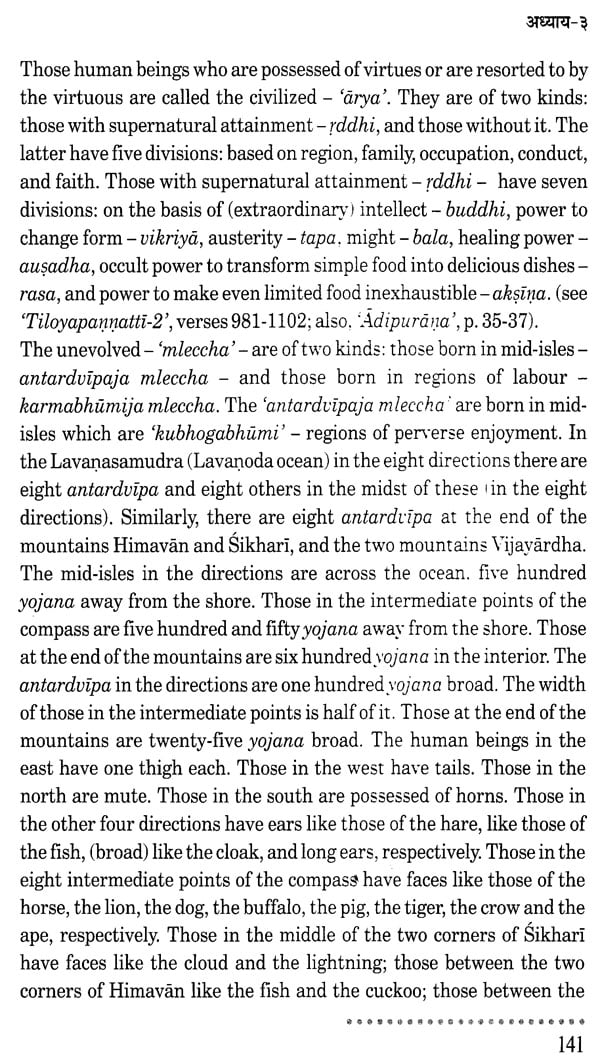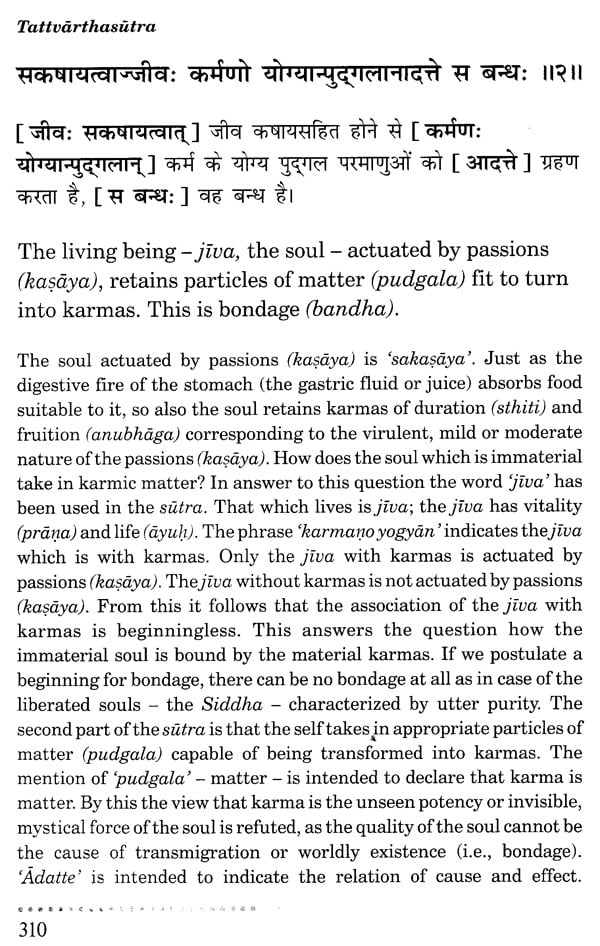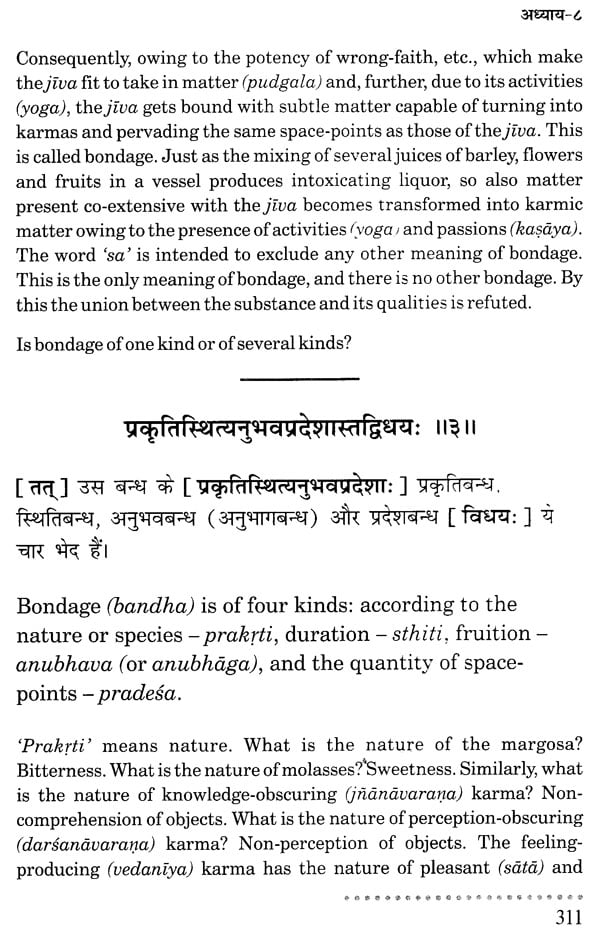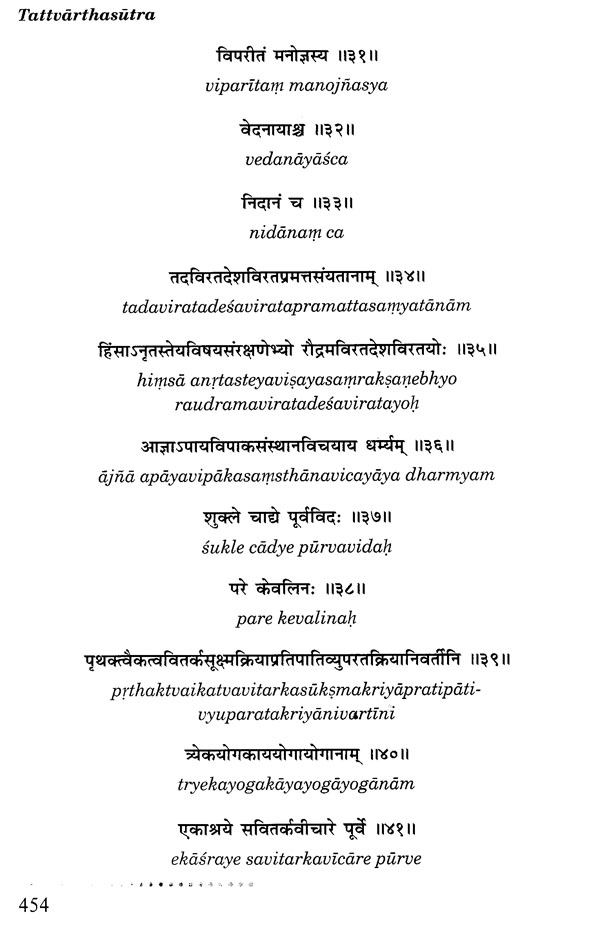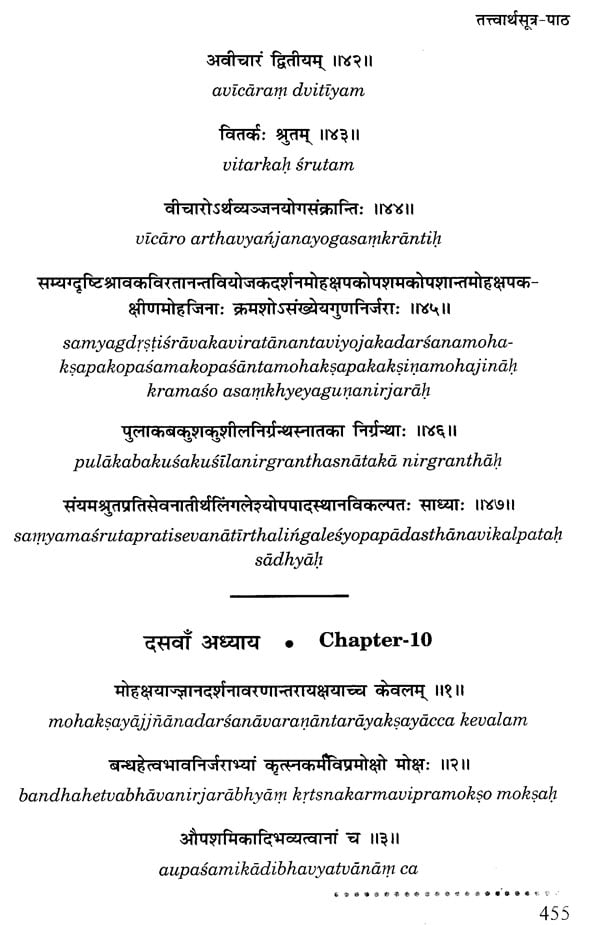
आचार्य उमास्वामी विरचित तत्त्वार्थसूत्र - Acarya Umasvami's Tattvarthasutra- With Explanation in English from Acarya Pujyapada's Sarvarthasiddhi
Book Specification
| Item Code: | NAY248 |
| Author: | Vijay K. Jain |
| Publisher: | Vikalp Printers |
| Language: | Sanskrit Text with English and Hindi Translation |
| Edition: | 2018 |
| ISBN: | 9788193272626 |
| Pages: | 466 |
| Cover: | HARDCOVER |
| Other Details | 9.50 X 6.50 inch |
| Weight | 910 gm |
Book Description
Brevity is the Soul of the Wit. It is evident in Tattvarthasutra' which captures the essence of the Jain dharma in just 357 aphorisms (sutra) with a total word count of 2314. Its original name was also a single word, viz., Tattvartha’. This sacred book is the first ever work in Sanskrit in the era of Lord Vardhamana. It is blissfully musical to recite and an excellent reader in Sanskrit poetry of aphorisms.
What is `tattvartha'? It is to unravel the common and uncommon threads of the intrigues of the functions of the beings in the universe. In this modern era, the use of artificial intelligence will help in better understanding of the interplay of matter and the bio-ware. Tattvarthasutra' helps in understanding the origin of the natural intelligence, its trappings in the maze of the universe and its purification from the karmic matter. That substratum, which happens to be you and me, is the cornerstone of the subject.
As mentioned by Shri V.K. Jain in his Preface, the first ever. English translation of `Sarvarthasiddhi' by Professor S. Appandai Jain was published by the name of 'Reality' by Vira Sasana Sangha, Calcutta in 1960. This book received rave reviews from the scholars. Professor Jain hailed from a village called Tiruppanamur in my district in Tamil Nadu. The `samadhi' of venerable Bhatta Akalanka can be seen in this historical village even today. The name Appandai is the Tamil region-specific title of Lord Parsvanatha. Professor S.A. Jain's younger brother took to Digambara renunciation as Gajapati Sagar and was successful in the sallekhana. Lest we forget, let me record the fact that Professor Jain received translation inputs from the illustrious guru, Shri Subbaiyya Sastri of Shravanabelagola Mutt, the famous historical Jain centre in south India. The English translation is a masterpiece in the annals of Jainism with scholarly erudition.
The author Shri V.K. Jain is already famous in the western world thanks to his numerous English translations of sacred texts. He has already published Tattvarthasutra' with a brief explanation of each aphorism. Possibly, a lesser known fact about him is that he is a bhavalingi, i.e., a saint in worldly attire. I dare say that I have not seen another author of Jainism in English with such an exalted spirit.
The book at hand is another masterpiece for more than one reason. It carries brief Hindi translation of the aphorisms and more references from sacred books. It retains the original Sanskrit words from Tattvarthasutra' in the body text thus giving an ample opportunity to the readers to enjoy the divine aroma of the sacred Tattvarthasutra'. I am sure, this book will also enrich the lexicon of English language with the addition of vocabulary from Tattvarthasutra'. This book will be complementary to 'Reality' by Professor Jain.
The Scripture is the Word of the Omniscient Tirthankara' or `Apta' or `Lord Jina'. It is inviolable and not opposed to the two kinds of valid knowledge - direct (pratyaksa) and indirect (paroksa). The ancient, learned preceptors - particularly prior to the 5th or 6th century CE, have deliberately abstained from mentioning their names or lineage in the profound Scripture that they had composed. They believed that their task was just to faithfully present, for the benefit of the bhavya souls, the Word of the Omniscient Tirthankara. The Scripture is replete with phrases like `vadanti jinah' (in Sanskrit) and jina bhaniyam' (in Prakrit) cautioning the reader that what has been said herein is only the Word of the Omniscient Tirthankara. Further, they believed that the association of their names with the Scripture in no way adds to its acceptability or sanctity.
Taking cue from works by the subsequent acarya and various inscriptions, it has been established that Acarya Grddhpiccha is the author of Tattvarthasutra'. Two other names of Acarya Grddhpiccha are common - Acarya Umasvami and Ac4rya Umasvati. The Digambara tradition believes that Acarya Grddhpiccha (Acarya Umasvami) may have been a direct disciple of Acarya Kundakunda who graced this earth at the beginning of the Christian era. Thus, the time for Acarya Grddhpiccha (Acarya Umasvami) is set at the 1st century CE.
Book's Contents and Sample Pages
